About a dozen years ago I bought an impressive Marlin 336 Octagonal in 30 30, but that’s not the rifle you see in the photo up top. I didn’t realize it at the time, but that 30 30 Marlin was a collectible rifle and I got a hell of a deal on it. I’ll give you a link to that story at the end of this one.
When I started the Peoples Republik of Kalifornia paperwork on the 336 Octagonal, I saw a brand new 1895 Cowboy Marlin at the same gunstore with the John Marlin proof and exceptional walnut. And that, my friends, is the rifle you see in the photos here. I’m not in the habit of buying two rifles at the same time (in fact, you can’t even do that here in Nuttyland any more), but wow, that 1895 was pretty and I bought both the 336 and the 1895. That Marlin rang all the bells for me…an octagonal 26-inch barrel, the .45 70 chambering, and killer wood. The time to buy a lever gun with superior wood is when you see it, and that’s what I did.

Over the last dozen years, I only had the Cowboy on the range a couple of times, and that was enough for me to know the sights were way off. A couple of weeks ago, I decided to find out exactly where it was printing with my favorite .45 70 load (more on that in a bit). The Cowboy grouped superbly well (it coverleafed rounds at 50 yards), but I had to go to the very top of the adjustment range on the rear sight to finally get the bullets to hit at the point of aim at 50 yards. In the rear sight’s middle elevation setting, the point of impact was 10 inches low at 50 yards. I couldn’t adjust the rear sight any higher, so I knew I needed a lower front sight.
I tried to call Marlin to ask for a shorter front sight, but all I got was a message telling me to go to their website. I struck out there, too. The website said that Ruger (Marlin’s latest and current owner) isn’t in a position to service Marlins or provide parts yet and they don’t know when they will be. Hey, at least they were honest, and that counts for something.
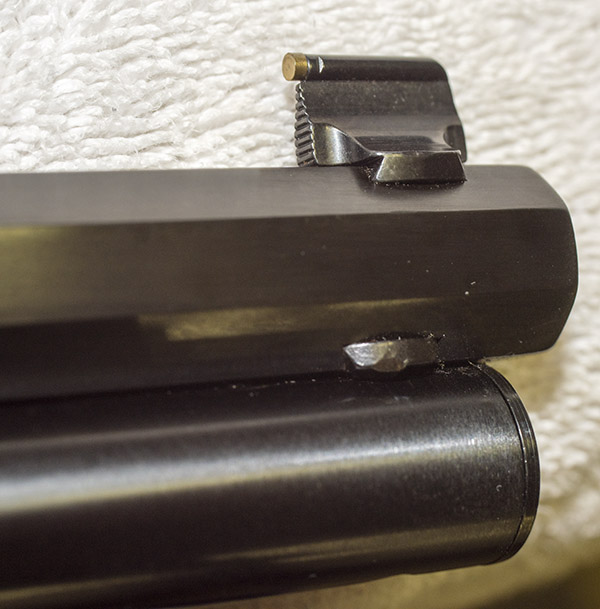
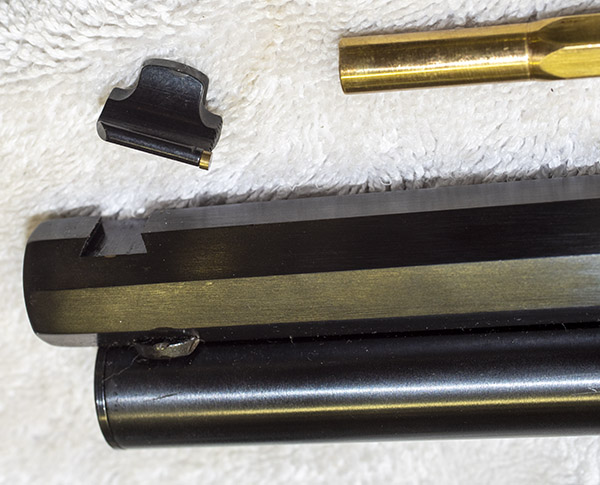
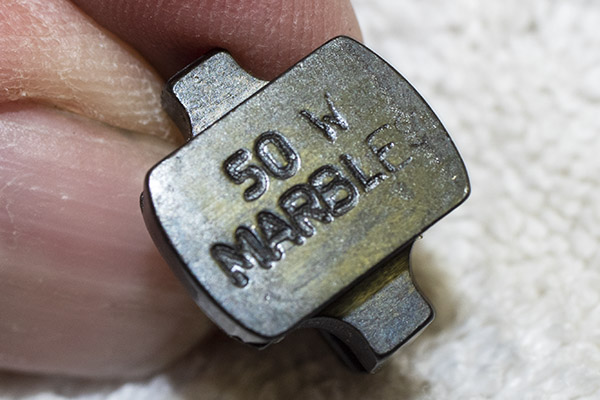
Okay, I reasoned, this should be no problem. I called Williams, the experts on iron sights, and I hit paydirt. The Williams guy told me that in recent years Marlin put whatever front sights they had in stock on their rifles with no thought given to where the guns would print. That’s what happened on my rifle.
Getting the correct front sight once you know where the rifle is printing is simple. The height of the front sight that came with the rifle was about 0.500 inches, and it was printing 10 inches too low with the rear sight as high as it would go. It’s an a/b=c/d calculation. If you know the sight radius, the front sight height, the distance to the target, and how low or high the point of impact is, you can calculate the required change in front sight height to move the point of impact the amount you want. I’d like to say it’s advanced engineering, but the truth is it’s a 7th grade algebra problem (and I made it through the 7th grade successfully, aside from a ton of time in detention). The calculation goes like this:
Required change in front sight height =
(desired shift on target/(50*36))(sight radius)
where
-
-
-
- 50*36 is the distance to the target in inches (50 yards * 36 inches/yard)
- The sight radius is 23 inches
- The desired point of impact on the target is 10 inches up (the rifle was grouping 10 inches below point of aim).
-
-
I did the math, and the required change in front sight height was a drop of (10/(50*36))(23) = 0.128 inches. That meant I needed a front sight about 0.372 inches tall.
What you see above is what Marlin should have done when they selected the correct front sight for this rifle, but they didn’t and I did. I bought two new front sights. One would raise the point of impact about 13 inches at 50 yards, and the other that would raise it about 5 inches at 50 yards. I knew that one of the two should work. The cost for both was only $35, and in the grand scheme of things, I always figured I can’t have too many gun parts to play with.
Williams had .341 and a .410 front sight. You can’t get the exact height you want but that’s okay…that’s why the rear sight is adjustable. So I bought both rear sights. The rear sight height adjustment would give me the room to dial either in. The .341 front sight would give me more than I needed; the .410 would give me a little less than I needed, but either one should get me into the adjustment range.
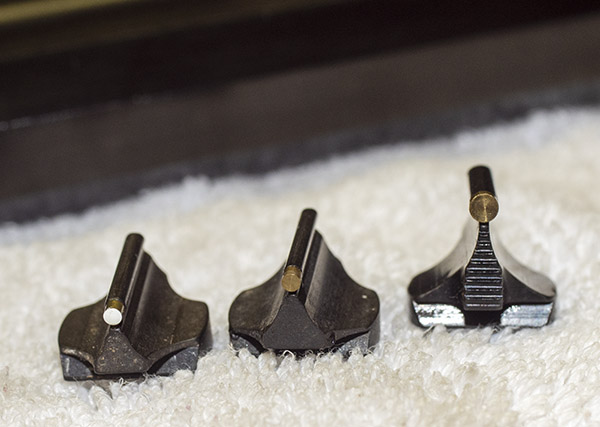
The front sight mounts in a dovetail on the barrel, and it has to be fitted. It’s an interference fit, but it has too much interference as delivered. You have to gently sand material off the bottom of the replacement sight so it goes into the dovetail with just a little interference. Easy does it is the mantra here (you can take material off, but you can’t put it back on). You want enough interference so the front sight has to be tapped in with a brass drift and it won’t move around due to recoil or normal hunting knocking about.
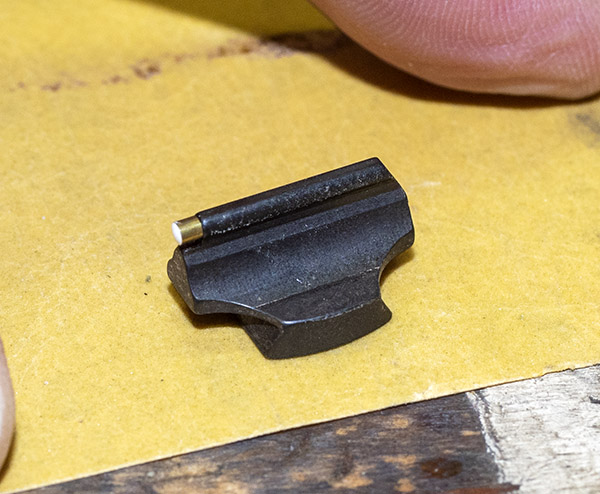
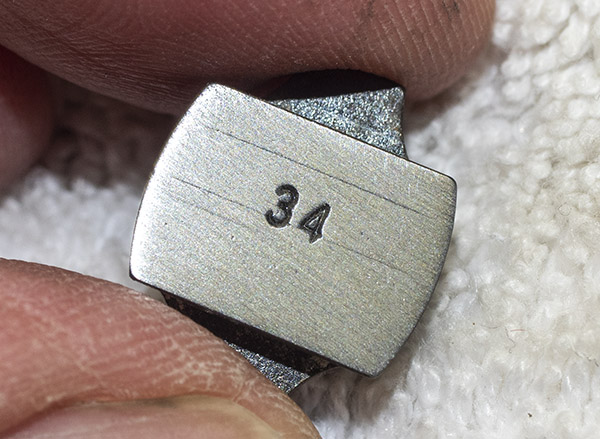
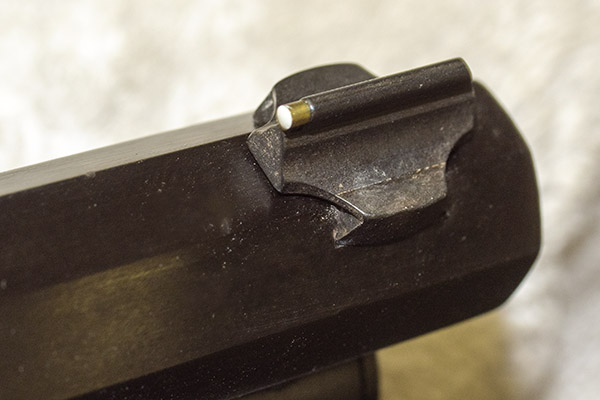
So how’s it all going to work? I’ll let you know after I get to the range. Oh, and my favorite .45 70 load? It’s the 405-grain Missouri Bullet Company cast bullet, crimped in the cannelure, with 35.0 grains of IMR 4198.
One more thing…that 336 Marlin Octagonal I told you about? It’s right here, along with a bunch of other cool lever gun stuff! You’ll want to go there…the 336 Octagonal is an interesting firearm.
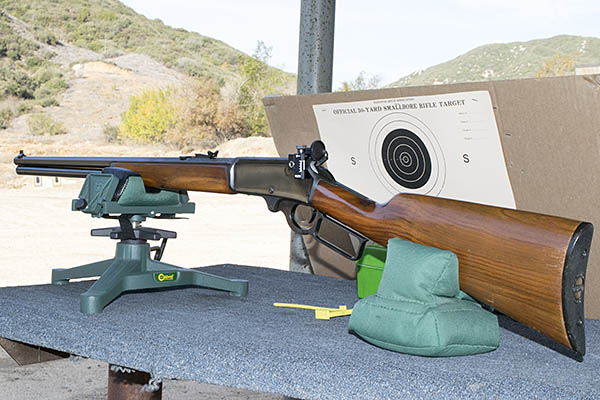
Sign up here!
The rest of the story with the new front sight installed!

